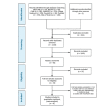Systematic review estimating the burden of dementia in the WHO Southeast Asia Region using Bayesian and frequentist approaches
- PMID: 33282225
- PMCID: PMC7688200
- DOI: 10.7189/jogh.10.020701
Systematic review estimating the burden of dementia in the WHO Southeast Asia Region using Bayesian and frequentist approaches
Abstract
Background: Rapid increase in life expectancy in low- and middle-income countries including the World Health Organization's Southeast Asia Region (SEAR) has resulted in an increase in the global burden of dementia, which is expected to become a leading cause of morbidity. Accurate burden estimates are key for informing policy and planning. Given the paucity of data, estimates were developed using both a Bayesian methodology and as well as a traditional frequentist approach to gain better insights into methodological approaches for disease burden estimates.
Methods: Seven databases were searched for studies published between 2010-2018 regarding dementia prevalence in SEAR, generating 8 relevant articles. A random-effects model (REM) and a Bayesian normal-normal hierarchical model (NNHM) were used to obtain the pooled prevalence estimate of dementia for people aged 60 and above in SEAR. The latter model was also developed to estimate age-specific dementia prevalence. Using UN population estimates for SEAR, total and age-specific projections of the burden of dementia in 2015, 2020 and 2030 were calculated.
Results: The prevalence of dementia in SEAR was found to be 3% (95% confidence interval (CI) = 2-6%) in those above age 60 based on REM, and 3.1% (95% credible interval = 1.5-5.0%) based on the NNHM. The estimated prevalence varies with age, increasing from 1.6% (95% credible interval = 0.8-2.5%) in people aged 60-69 to 12.4% (95% credible interval = 5.6-20%) in people above the age of 80. The risk of developing dementia increased exponentially with age. The number of people living with dementia in SEAR in 2015 was estimated at 5.51 million (95% credible interval = 2.66-8.82), with projections of 6.66 million (95% credible interval = 3.21-10.7) in 2020 and 9.6 million (95% credible interval = 4.62-15.36) in 2030.
Conclusion: The burden of dementia in SEAR is substantial and will continue to increase rapidly by 2030. The lack of research focusing on dementia in SEAR points to a significant under-recognition of this disease. The projected rise in dementia cases in the future should prompt urgent governmental response to address this growing public health issue. We also argue that given the overall paucity of data for the region, the Bayesian approach offers a promising methodology for improved estimates of disease prevalence and burden and should continue to be explored.
Copyright © 2020 by the Journal of Global Health. All rights reserved.
Conflict of interest statement
Competing interests: The authors completed the ICMJE Unified Competing Interest form (available upon request from the corresponding author), and declare no conflicts of interest. Igor Rudan is the Co-Editor in Chief of the Journal of Global Health. To ensure that any possible conflict of interest relevant to the journal has been addressed, this article was reviewed according to best practice guidelines of international editorial organisations.
Figures



References
-
- Prince M, Wimo A. World Alzheimer Report 2015 - The Global Impact of Dementia. Alzheimer’s Disease International. 2015. Available: https://www.alz.co.uk/research/WorldAlzheimerReport2015.pdf. Accessed: 28 September 2019.
-
- Wimo A, Prince M. World Alzheimer Report 2010 - The Global Economic Impact of Dementia. Alzheimer’s Disease International. 2010. Available: https://www.alz.co.uk/research/files/WorldAlzheimerReport2010.pdf. Accessed: 28 September 2019.
-
- World Health Organization. History of the WHO South-East Asia Region. 2019. Available: http://www.searo.who.int/about/history/en/. Accessed: 28 September 2019.
-
- Prince M, Jackson J. World Alzheimer Report 2009. Alzheimer’s Disease International. 2009. Available: https://www.alz.co.uk/research/files/WorldAlzheimerReport.pdf. Accessed: 28 September 2019.
Publication types
MeSH terms
LinkOut - more resources
Full Text Sources
Medical
